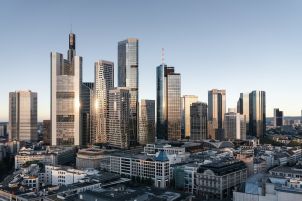As logistics becomes a more integrated part of cities, there is a growing need by this asset class to repurpose space in order to form logistics infrastructure. As Oliver Wissel explains, “Not every area is suitable for office or retail development so we have empty retail shops in B or C locations that can be transferred into small logistics hubs. We can use multi-storey buildings for example. The challenge is to integrate logistics into cities so there are different discussions about integrating it into shopping centres for example and one trend out of Covid was fast food delivery services, where you can order food and daily good in 10-20 minutes so you need to have locations very close to customers. This has a positive effect as you have empty retail space in B or C locations which are no longer attractive for companies and you have ground floor areas of buildings that can be transferred to small logistics hubs. The challenge is avoid conflicts because you see it in every city some traffic jams with delivery trucks, and the alternative is to use cargo bikes or private cars or some companies sharing the space on trucks.”
Whilst some space within cities is being repurposed, there are also new ways of interacting with space that optimise the surface area and adapt to potential changes in activity. Oliver Wissel clarifies this point by explaining, “We know from Asia and some cities in Europe like Paris and Hamburg that developers built multi-storey logistics buildings. The challenge with logistics is that you not only need warehouse space but also open space for the trucks and transport goods and if you have for example a 10,000m2 warehouse in the city for beverages, you need to have the space for 100-150 delivery trucks. A mix of different companies is possible, where you have a ground floor with high ceilings for a big logistics company and smaller logistics companies, last mile and small production companies above. It’s good to section up this space for small and medium sized companies.”

10. Integrating urban logistics into our cities
Market fundamentals across the logistics market
The logistics market has remained strong, particularly after the impact of the Covid crisis and the boost to e-commerce. Oliver Wissel shares some details about the market as he states, “Investment is setting new records and gaining share on other assets, prime yields are still compressing. In some markets, we are already below 3%. This leads to aggressive pricing on prime products. 25% of investment in Europe flows into logistics properties. The occupier market broke new records with transaction volumes in 2021 increasing by 29% in the six biggest European countries. High demand and supply balance mean rental pressure is building. Covid-19 accelerated the shift to e-commerce and put the spotlight on supply chains. Shoppers turn to internet sales which gave a boost to e-commerce as shops were closed in lockdowns and traditional retailers developed internet solutions for customers.”

Not every area is suitable for office or retail development so we have empty retail shops in B or C locations that can be transferred into small logistics hubs. We can use multi-storey buildings for example. The challenge is to integrate logistics into cities so there are different discussions about integrating it into shopping centres for example
-
 Episode 1
Episode 1The history of buildings must not be forgotten
-
 Episode 2
Episode 2Building reversibly and optimising square metres
-
 Episode 3
Episode 3Building differently: the drive for a circular economy approach




